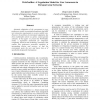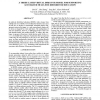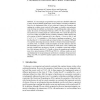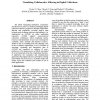INEX
2004
Springer
14 years 4 months ago
2004
Springer
In this paper we compare the effectiveness scores and system rankings obtained with the inex-2002 metric, the official measure of INEX 2004, and the XCG metrics proposed in [4] an...
ICCHP
2004
Springer
14 years 4 months ago
2004
Springer
In this paper, we introduce the concept of ”user policies”. The objective of policies is to specify user preferences in terms of presentation and interaction with information. ...
OTM
2005
Springer
14 years 5 months ago
2005
Springer
This paper proposes a definition of viewpoints in a “kind of” ontology. The use of viewpoints allows one to simplify user interface and to facilitate the expression of user pr...
IUI
2005
ACM
14 years 5 months ago
2005
ACM
We present PLIANT, a learning system that supports adaptive assistance in an open calendaring system. PLIANT learns user preferences from the feedback that naturally occurs during...
MOBIQUITOUS
2005
IEEE
14 years 5 months ago
2005
IEEE
Automatic adaptation of the environment to user preferences results in personalized ambients that fulfill user interaction requirements in a more suitable way. However, the proble...
DEXAW
2005
IEEE
14 years 5 months ago
2005
IEEE
The primary goal of smart homes is to provide their users with the maximum comfort and convenience. In this paper, we present a profile management framework for situation-dependen...
ISCAS
2006
IEEE
14 years 5 months ago
2006
IEEE
—We discuss the use of a reliable user requirements methodology for gathering essential data relating to user needs in advanced, personalised multimedia content applications. We ...
ICMCS
2006
IEEE
14 years 5 months ago
2006
IEEE
1 In multi-site distributed education (MSDE), video streams from multiple sites are available. To best utilize the limited screen space at each site, we develop a customizable, aut...
ER
2007
Springer
14 years 5 months ago
2007
Springer
It is increasingly recognised that user preferences should be addressed in many advanced database applications, such as adaptive searching in databases. However, the fundamental is...
IV
2007
IEEE
14 years 5 months ago
2007
IEEE
The NEAR (Navigating Exhibitions, Annotations and Resources) panel is a method of managing digital collections and user preferences through collaborative filtering and graphically...




